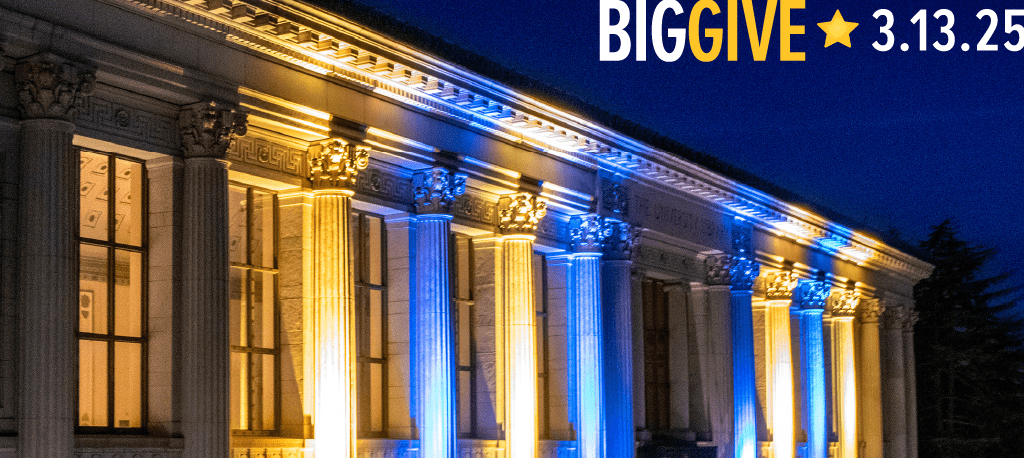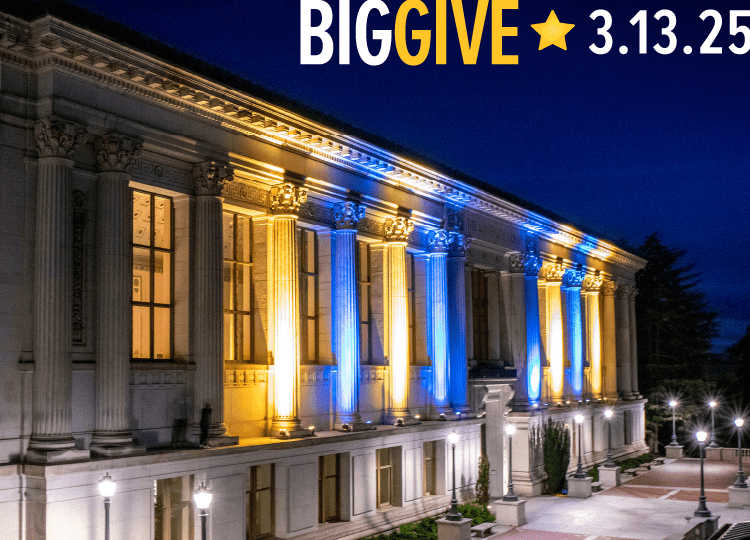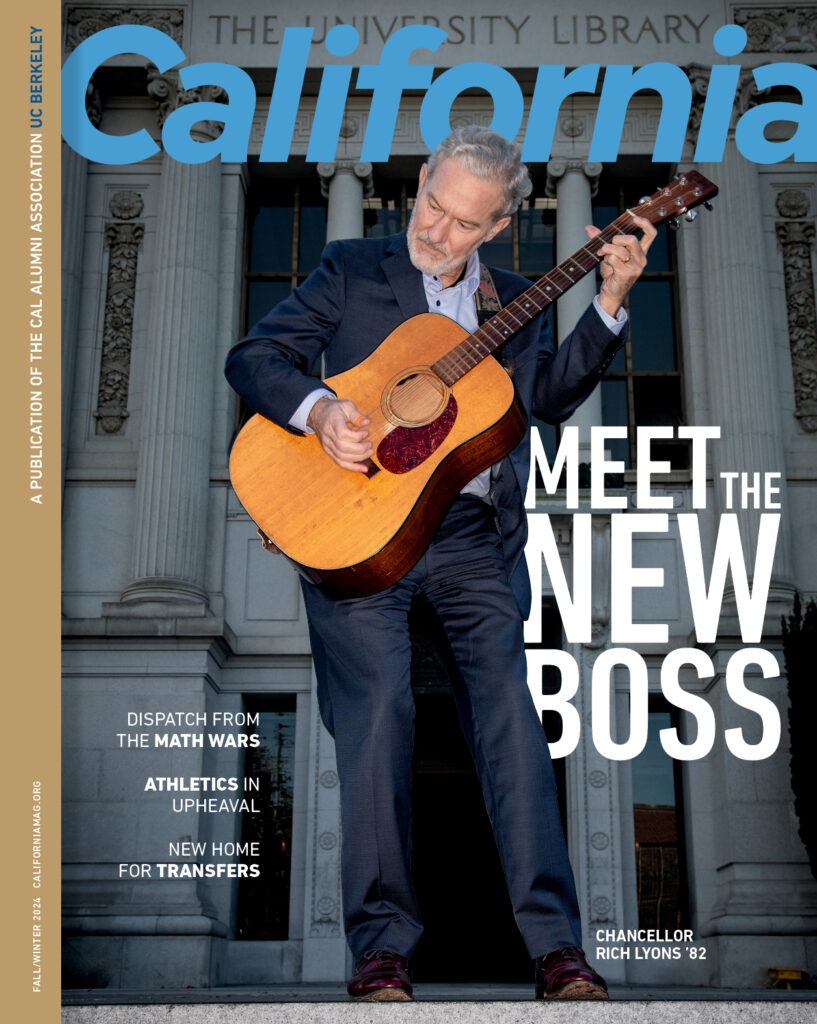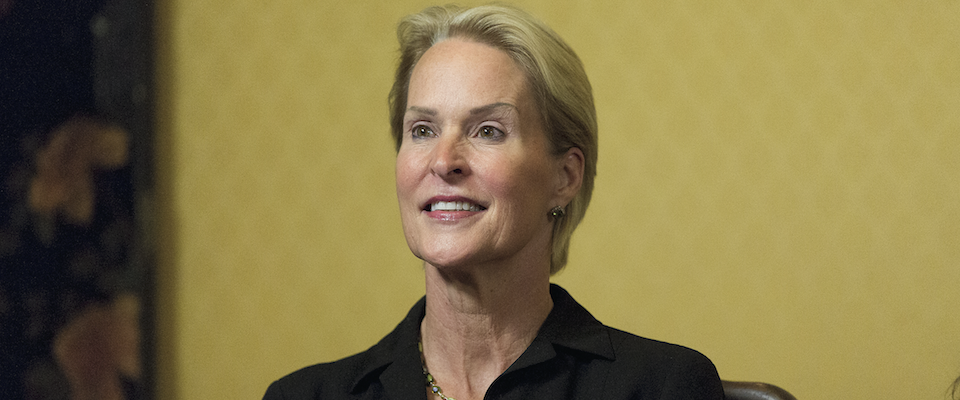Frances Arnold has found a way to leverage the planet’s most powerful weapon for change: evolution.
At 15, she was a class-skipping, catch-me-if-you-can maverick hitchhiking to D.C. to protest the Vietnam War. Looking back on those years now, Frances Arnold says, “Fifteen is one of those terrifying ages, where you’re frustrated because you know something’s wrong, but you have no idea how to fix it. So I did what I could, which is protest.
“But as I’ve gone through my life,” she continues, “I know that it’s my responsibility to fix it. I’m much better at fixing things than protesting.”
She pauses.
“But if you don’t start off protesting, then you become complacent.”
Frances Hamilton Arnold has found a way to leverage the planet’s most powerful weapon for change: evolution. The technique she has pioneered is known as directed evolution.
Arnold’s fascination with science began when she was 11 years old, her sights then set on becoming a heart surgeon.
Now utilized in labs around the world, directed evolution involves breeding enzymes for particular properties, in much the same way we do everything from racehorses to corn. By steering enzymes this way or that over several generations, Arnold’s lab is able to tease novel behaviors out of the catalysts. “Frances likes to say, ‘They’ve always been able to do it, but nature’s never asked them to,’” says Ella Watkins-Dulaney, a Ph.D. student in Arnold’s lab.
Last October, Arnold received the Nobel Prize in Chemistry for her decades-long work on the directed evolution of enzymes, the proteins that catalyze chemical reactions, which she began studying in the late 1980s, fresh out of graduate school at UC Berkeley. The night the call came from Stockholm, she was in Dallas to give a talk, when the phone roused her from a deep sleep. Arnold assumed it was one of her sons calling with an emergency. She couldn’t have been happier to be wrong. Elated, she hung up and called her son James, who ignored her first two calls. “Nobody wants to answer the phone when Mom calls at 2 o’clock in the morning!” she says, laughing.
Back at Caltech, where Arnold has been a professor for 32 years, her lab was euphoric—and not just for their mentor. Several of her graduate students’ papers were cited in the Nobel analysis. “All of my former and current students just felt like it went to them,” says Arnold of the prize. “And it did.”
Arnold’s fascination with science began when she was 11 years old, her sights then set on becoming a heart surgeon. Christiaan Barnard had just done the first human heart transplant, and young Frances was mesmerized. “I scoured all the surgery books in the public library,” she says.
Realizing that the sight of blood made her ill, her medical ambitions quickly fizzled, and by the time high school rolled around, she didn’t want to be anything.
For all her rebellion, Arnold was a fiercely curious teenager. “To me, knowledge was like money in the bank,” she says.
“This was the early 1970s—we had learned from the Vietnam War that you can’t trust anybody over, what, 25,” she recalls. “We no longer listened to our teachers—I no longer listened to my teachers, to my parents. I was just going to make my own way.” Thinking back, she lets out an exasperated, “Aie!”
“That streak of independence was very, very strong,” says Arnold, who acknowledges that the trait got her into trouble. At school, she amassed a stack of truancy notices. And, frustrated by her parents’ strict rules, she moved out of their home in Pittsburgh to an apartment in a nearby neighborhood. She paid her own rent, lying about her age to work as a cocktail waitress in a jazz club and driving a cab.
For all her rebellion, Arnold was a fiercely curious teenager. “To me, knowledge was like money in the bank,” she says. “Learning a language or learning a piece of music, reading, [it was all] comforting to me.”
Frances reads constantly—novels, biographies, short stories, the news. As a younger woman, she played the piano and guitar, and still loves music. When she describes the elegant process of evolution, she often compares it to the composition of a Beethoven symphony. “You give a much deeper impression if you can describe the science in terms of something that touches the soul,” she says.
Despite having nearly been expelled from high school, Arnold had almost perfect standardized test scores and made it into Princeton, where her nuclear-physicist father studied. “I applied to become an engineer when there were no girls—there were just no girls in mechanical engineering,” says Arnold. “So I guess I was an odd-enough-duck applicant that they took me.”
She majored in mechanical and aerospace engineering, but also explored economics, Russian, and Italian.

Even now, of course, STEM fields are male-dominated, and Arnold is only the fifth woman ever to win the Nobel Prize in Chemistry. She’s optimistic, however, about the future. “There are a lot of beautiful, elegant women in chemistry, and I predict we will see many more Nobel chemistry prizes for women,” Arnold said in a press conference.
While at Princeton, Arnold took a year off to live in Italy, working in a factory that made nuclear reactor components. After graduating, she worked as an engineer in South Korea and Brazil before landing a job at the U.S. Department of Energy’s Solar Energy Research Institute, or SERI, in Colorado. President Jimmy Carter had established the laboratory following the 1973 oil crisis. In fact, the United States had, at the time, a national goal to produce 20 percent of its energy from renewable resources by 2000. (As of 2017, renewable energy sources still only accounted for 12.7 percent of the country’s total energy consumption.)
Inspired by the prospects of clean energy, Arnold moved to Berkeley in 1981 to pursue her Ph.D. in chemical engineering and work on developing biofuels with Harvey Blanch, a pioneering biochemist.
She says she “knew nothing about chemistry,” but Blanch accepted her anyway. A friend from SERI had given her a glowing review, so he took a chance.
“It was a little unusual,” admits Blanch, now at UC Riverside. The faculty decided Arnold should play catchup by taking all of the undergraduate chemistry courses. “She did that in 12 months and did astonishingly well.”
Arnold spent five years in Berkeley, including a postdoctoral year, and remembers it fondly as the place where she truly fell in love with science. Berkeley was a “whole new world,” she recalls. “I met many like-minded people, people who were very excited about science, about the arts, about food.” Especially after living in Colorado, it was a haven.
“So I said, ‘That’s what I want to do, I want to be an engineer of the biological world.’”
“Colorado in the ’70s was a very backward place—and I didn’t live in Boulder, I lived in Golden, near the Coors factory,” Arnold says. “It was very hard to find people to talk to. It was very right-wing, and it was not so interesting.”
By the time Arnold finished the undergraduate classes at Cal, opportunities to research biofuels had largely evaporated with the shifting political winds. Ronald Reagan was president, oil prices had dropped, and the public’s interest in biofuels and other renewables quickly waned. “Reagan basically killed all the alternative-energy projects,” says Blanch. “And we were one of them that hit the buzz saw.”
And yet, as it turns out, Arnold’s timing couldn’t have been more perfect. The early 1980s marked the dawn of the genetic engineering revolution, and the Bay Area was its birthplace. UCSF researchers had only recently discovered that DNA could be effectively cut and pasted and that we had the capability to “manipulate the code of life,” as Arnold puts it.
“So I said, ‘That’s what I want to do, I want to be an engineer of the biological world.’”
New companies and technologies were popping up left and right, with many of them started by UC Berkeley professors. (Cetus, the world’s first biotechnology company, was based in Berkeley and founded in 1971 by Nobel laureate Don Glaser and others.)
“It was a fascinating time, I had amazing people to learn from,” says Arnold. “Marian Koshland, Dan Koshland, Judith Klinman, Ignacio Tinoco—just one after another, these tremendous names and forces that influenced me and made me realize anything is possible.”
In Blanch’s lab, Arnold worked on technology that used antibodies to isolate proteins. The question was, says Blanch, “How do you make these [antibodies] commercially, in enough quantities to make it work?”
An engineer at heart, Arnold found the challenge rewarding. She designed a system to separate the antibodies at scale, purifying them from a soup of molecules by attracting them with their perfect chemical match. The technology is called “affinity chromatography” and uses a tall, tube-like column, the walls of which are lined with the chemical bait. “You run a big, messy solution down a column, and the stuff on the column will just pick out the product you want,” explains Blanch. “Everything else would go by.”
When Arnold landed at Caltech in 1986, she hit the ground running as a protein engineer.
Proteins, and specifically enzymes, are workhorses, responsible for everything from photosynthesis and fermentation to digestion and DNA replication. They are not generalists, however. Each type of enzyme has a very specific 3-D structure, the shape of which dictates what molecules it can bind with. Once paired, an enzyme goes to work, snipping, glueing, and bending molecules to initiate and facilitate chemical reactions.
When Arnold was a student, scientists would explore the world, looking for a specific enzyme to catalyze a particular reaction. “There was a whole belief that you have to go out in nature and look for new enzymes,” says Blanch. Others, however, thought you could design enzymes in the lab using logic and data. But since nobody really knew how those 3-D shapes dictated behavior, the search was often futile.
Out of sheer frustration, Arnold looked to Mother Nature, and realized there was a ready tool at hand. “I said, ‘Well, gosh, I’ll never be smart enough or have enough computational power in my scientific lifetime to write down all the equations that govern the placement of atoms in an enzyme and govern transition state for a chemical reaction. It’s not going to happen. But I have this wonderful algorithm, this process of evolution, that I can manipulate and completely circumvent the fact that I don’t know how sequence encodes function.’

“To me it was obvious. To everyone else, it was either stupid or not interesting or impossible.”
But as has been her style since youth, she ignored what everyone else thought and went to work.
Knowing that enzymes are very particular, only working under specific conditions of, say, temperature, pressure, or acidity, Arnold wondered whether she could trick them to work anywhere. Says Blanch, “You can see this engineering question in Frances’s later work, where she’s saying, ‘We’ve got enzymes, but how do you change them to do something useful?’ ”
In her seminal 1993 paper on directed evolution—the culmination of three years’ labor—Arnold worked with the enzyme subtilisin E, which breaks down a protein called casein in dairy products. The enzyme had only ever functioned in the watery environment of a cell, but Arnold wanted it to work in an organic solvent, something peers told her she’d never be able to accomplish.
Arnold had to admit they were right. She couldn’t, but evolution could.
To direct the evolution of the enzyme, Arnold started by taking the DNA of the bacteria that codes for subtilisin E and replicating it in a test tube using a technique called “error-prone PCR,” which would ensure random mutations of the bacteria’s genes.
“There are a lot of beautiful, elegant women in chemistry, and I predict we will see many more Nobel chemistry prizes for women.”
The resulting new bacteria now produced a new, slightly evolved generation of enzymes. Arnold tested the new batch to see which enzyme was best at breaking down the casein protein in organic solvent. That enzyme’s genes were then passed on to the next generation, and so on. After three generations, the process yielded an enzyme that was 256 times better at breaking down the protein than the ancestral enzyme.
Arnold’s lab is investigating just how far enzymes can be pushed into new jobs. One aim is to engineer enzymes that can replace the harmful heavy-metal catalysts used in chemistry today, which must be mined from the earth and, once used, discarded as toxic waste.
Already, Arnold and her colleagues have devised a process to break down cellulose and turn it into fuel, something scientists have been wrestling with for decades. Unfortunately, the high cost of production has stalled progress. Arnold says it’s a question of society’s needs and readiness for change. “Ten years ago, a lot of very powerful technologies were developed, but they haven’t been implemented because it’s hard to compete with oil,” she continues. “When that changes—when oil prices go up or when we put a value on our climate—these technologies will be ready.”
As a mentor, Arnold’s most important rule of thumb is to make sure students’ creativity is unbridled. It’s the students and their wild ideas that push the lab forward, she says. “The first important thing is to make people feel safe to have ideas,” she said. “Young scientists love to generate ideas. If you make it risky, you’re just going to shut off that process.”
Each semester, she gives her students a reading assignment: Jorge Luis Borges’s “The Library of Babel,” which describes a labyrinthine repository of limitless information. The short story is intended to give students a “gut feeling” for the scale of the natural world (and, indeed, the seemingly infinite number of possible protein sequences)—how big it is, how empty it is, and how remarkable it is that evolution can traverse such a space.
Virgie Hoban ’16 is a former California intern. She wonders if enzymes can solve her plentiful life problems.
From the Spring 2019 issue of California.



















